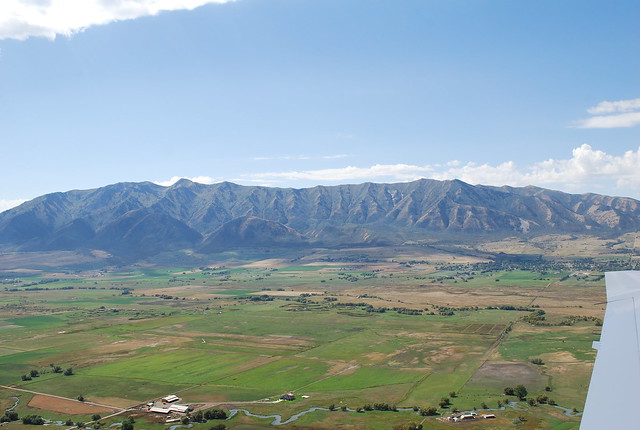
Cache Valley in Utah (photo: flickr)
According to a study published in the journal, Environmental Research Letters, University of Illinois researchers Ximing Cai and graduate student Xiao Zhang are predicting that climate change's effects upon agricultural land will vary from region to region.
- High latitudes may expect an increase of total arable land, for example, Russia may gain 36-67%, China 22-36%, and the U.S. 4-17%.
- Tropical and sub-tropical regions may suffer different levels of lost arable land, for example, South America may lose 1–21% of its arable land area, Africa 1–18%, Europe 11–17%, and India 2–4%.
A second report, out earlier this year, The Last Drop: Climate Change and the Southwest Water Crisis, discusses water demands in the U.S.'s stressed Southwest and makes these key points:
The Stockholm report studied water supplies in Arizona, California, Nevada, New Mexico and Utah.
- The agricultural sector uses water more than any other; farmers use 78 percent of the Southwest region's water to produce crops and livestock, according to the report.
- Growing hay takes up 94 percent of the state's (Utah) agricultural water while earning the lowest value in the Southwest - $58 per acre foot, the report states.
- With climate change, the Southwest "water crisis" will grow far worse; it will make the cost of the next century's projected water shortage "at least 25 percent higher," according to the report.
- "At some point, in a dry year, crops that had been planted would fail due to lack of irrigation in midseason. Urban areas would boil over with resentment at sudden, draconian cutbacks. Subsidence and other damages from over-pumping of groundwater would become widespread."